- Home
- Eduard Joseph
Life As We Know It
Life As We Know It Read online
Life as we know it
By Eduard Joseph
Published by Eduard Joseph
Copyright 2016 Eduard Joseph
Front cover design by Eduard Joseph
Author's official Twitter Page
Author's official Facebook Page
This is a work of fiction. The events and characters described herein are imaginary and are
not intended to refer to specific places or living persons. Any resemblance to any person or
persons, living or dead, is purely coincidental.
All Rights Reserved
The right of Eduard Joseph to be identified as the author of this work has been asserted by him under the South African Copyright Act of 1978 (as amended).
I want to tell you a strange story – the story about my journey, but before I do, I need you to understand the basics of where you live. Space, our home, is a big place and holds many secrets mankind has yet to discover. We think we’re the masters of the universe with our technology, motor vehicles and finance indicators that basically rule the world, but we’re nothing more than just a dust particle when it comes to the big picture.
Before I get to my story, it’s important to make you understand how insignificant you are despite what you might think.
As we travel on this journey, I want you to imagine that it’s just you alone – nobody else; not your mother, your father, your children or your partner… just you. You might feel significant as you sit in your home reading this, but just remember that there are just over 7.3 billion people on planet earth – all with the same idea that they are somehow special and different from everyone else… just like you.
If that hasn’t made you understand how small you and unimportant you might be, let’s zoom out a bit and see where you and the rest of the 7.3 billion people live their every-day lives:
Earth. Our planet is home to 7.3 billion people. 7.3 Billion. Can you even start to imagine how many people that is? I have difficulty to wrap my mind around the fact that musicians can fill stadiums with up to 40, 000 people… that’s not even a fraction of earth’s population. That’s like, well, a needle in a haystack of needles.
So earth’s a pretty big place, right? Well not really. Earth’s radius is only 3,959 miles (6,371 kilometres) and it holds a population bigger than your mind could probably understand right? So, on our journey, you are standing somewhere on the earth’s surface… alone.
But let’s zoom out even further…
Our solar system. Can you see your home from here? That little blue ball – the third rock from the sun. Earth is in sort of a “safe zone”… any closer to the sun and we’d fry – any further out and we’d freeze to death. Our planet is situated in just the right spot in our solar system for life to be possible and it’s not even the biggest planet in our solar system. Earth and its 7.3 billion population doesn’t seem so big anymore, right? I bet you feel pretty small and alone right about now?
Earth is about 93 million miles (149 million kilometres) from the sun, but looking at the photo it seems quite close. Our sun is a giant – it’s the biggest object in our solar system and to make you understand how big it is and how small you are on this journey; earth could fit 1.3 million times in the sun. That’s right; the sun is the size of 1.3 million earths… that means over 9.4 trillion people (7.3 billion times 1.3 million) could easily fit into the sun with enough space to walk around, build houses and buildings and even roads without ever getting crowded. Now that’s big! But for the purpose of this journey, you are alone out here where there is sufficient space for 9.4 trillion people… can you possible fathom how big our solar system is?
But let’s continue on this journey out into space…
The Milky Way. This is our galaxy and it consists of dust particles, gas and nearly 1 billion stars the size of our sun and at least 100 billion planets the size of earth; and yet you can hardly see them in the vastness of space. That little spec at the point of the arrow is our solar system. Can you still see your home from here?
Because our galaxy is so big, we can’t measure distance in normal units like kilometres or miles, but rather something known as light-years or a parsec; which is equal to 3.26 light-years. How do light-years work and how long are they, you might ask. A light-year is about 6 trillion miles (or 9 trillion kilometres) and is basically what is sounds like – the distance light travels in one Julian year (another space term we don’t need to get into right now).
So, if you decided on your journey through space that you’d want to see what’s at the centre of our galaxy (that illuminated part) and decided to, let’s say walk there…you would have to travel 28 – 29 thousand light years and probably never get there before you died as no technology exists yet that can reach the centre of our universe in our lifetime.
But let’s venture off further into space to get a better picture of how small you are on this journey of discovery…
This is the known universe. Mankind’s technology might be advanced, but we can only see a small part of the entire universe and therefore we know that the part we can see consists of between 100 – 200 billion galaxies; each one with their own 100 billion stars and planets and solar systems and perhaps even small life forms like ourselves.
Now if the known universe hasn’t made you feel utterly alone, small and insignificant, then I don’t know what will.
Yes, space is a big place and it’s home to strange and peculiar things and the most peculiar thing of all is probably what is known as a black hole. Most people don’t know what a black hole is, but the name alone can strike fear into the hearts of people who can begin to fathom what they do… in short; it’s death… or so astronomers believe as nobody really knows what goes on inside a black hole and so, theory takes over.
Not to get too scientific here, but a black hole might not be a hole as the name suggests, but rather a sphere; a point in space-time where the gravitational pull is so intense that not even light can escape it. Basically, it pulls everything in and is virtually undetectable except for the way matter interact around it. Think of it as water circulating a drain; if the drain was invisible, you’d only know it was there from what the water is doing. The same can be said about a black hole as it can only be detected by the light and matter being sucked in.
So what would happen if you got too close to a black hole? Well, with any other danger in life, for instance a cliff, if you got too close to the edge you’d fall in – well, in this case, be pulled in by the immense gravitational pull of the black hole.
If you look at the photograph above, you’ll notice that at a certain point you’re able to see matter swirl into the black hole – this is known as the event horizon (the point of no return). The closer to the actual abyss the matter gets, the faster it orbits until it “spaghettifies” (or rather, when you can see it stretch out like in the photo above). Depending on the size of the black hole and the gravitational pull, the distance to the event horizon varies, but if you get too close, you’ll get pulled in – almost like a kayaker trying to out-kayak the current of a river dragging him towards a waterfall… at some point the current will overpower him and there is nothing he can do to prevent it – thus not even light can escape these monsters of nature.
What is a black hole? We know that a black hole is normally created when a star reached the end of its lifetime and implodes on itself. The gravitational pull becomes too much and a singularity is formed (again, think of water and a drain).
What is a singularity, you might ask… it’s what creates the gravitational pull. I remember in school we were told during a science class that the smaller the point of pressure, the bigger the pressure would be and the teacher gave us an excellent example;
A woman falls
onto a plate of glass that is the only thing standing between her and death. If she spreads out her weight by lying flat, she’ll be alright. If she tries to shift, she puts more of her body weight on her hands and the glass begins to crack. She finally stands upright – applying all of her body weight into a single point (her feet) and the glass finally gives way.
The singularity can be explained in the same way; take the weight of Mount Everest and compress it into the size of a grain of salt – this is not even a fraction of the pressure needed to create a black hole.
Black holes are created when stars ten times bigger than our sun implodes on itself and creates a singularity the size of an atom (much smaller than a grain of salt), so we’re safe. There’s no way that our sun would ever be able to create a black hole… but what if it did? Would we, along with the rest of our solar system get sucked into the abyss? The science says ‘no’. Our sun might be big, but it needs to be much, much bigger to create a black hole of pure destruction.
If our sun somehow imploded on itself and formed a black hole, our planet, along with the rest of the planets in our solar system would simply orbit around it like they’re doing now (that’s if we survive the bursts of radiation sent out through space when the

 Zac Zombie 3: Night of the Undead
Zac Zombie 3: Night of the Undead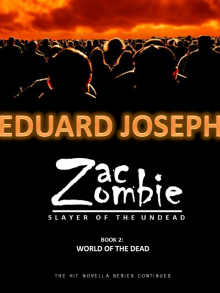 Zac Zombie 2: World of the Undead
Zac Zombie 2: World of the Undead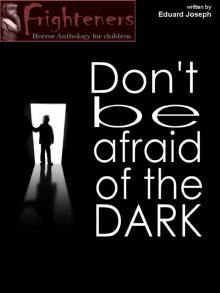 Don't be Afraid of the Dark
Don't be Afraid of the Dark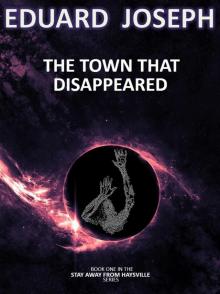 The Town that Disappeared
The Town that Disappeared Ultimatum
Ultimatum Hotel Horror Story
Hotel Horror Story God's Gonna Cut You Down
God's Gonna Cut You Down 1950s: The Decade of Perfect Housewives, Cadillacs & Zombies
1950s: The Decade of Perfect Housewives, Cadillacs & Zombies The Eilean Mor Mystery
The Eilean Mor Mystery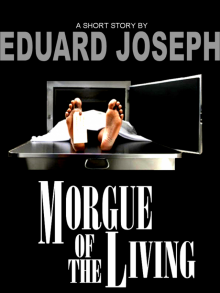 Morgue of the Living
Morgue of the Living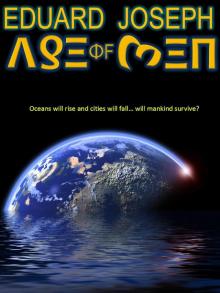 Age of Men
Age of Men Zac Zombie 4: Hell on Earth
Zac Zombie 4: Hell on Earth The Thirst
The Thirst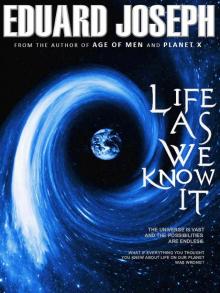 Life As We Know It
Life As We Know It Welcome to the Neighbourhood
Welcome to the Neighbourhood Trick or treat
Trick or treat The Tree
The Tree Zac Zombie: Slayer of the undead
Zac Zombie: Slayer of the undead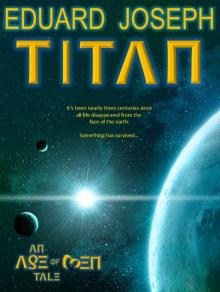 Titan
Titan